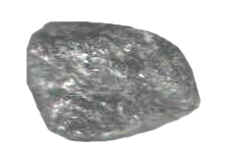|
MICA SCHIST
|
 |
A common rock containing a range of silicate materials which determine its colour and texture. The most common component are quartz, biotite and muscovite but it may also contain some garnet, kyanite or lepidiolite (secondary components). Most of the minerals found in mica schist are silicates of aluminium and potassium. It may also contain other metals such as iron, magnesium and titanium. Muscovite is the most common mica schist. The term schist may be applied to many rocks most of which are mica rich. They are usually named after the mineral which is most prominent within them e.g. biotite schist or garnet schist.
Mica is the Latin word for grain and schist is derived from the Greek word skhizein which means to split.
Mica schist forms when pre existing rock is altered by heat and pressure. It is usually associated with regions of metamorphism where sedimentary strata have been altered. Mica schists are medium to coarse grained. Minerals within it are usually arranged in parallel formation in leaf like layers known as foliation.
It is commonly found in mountain belts in Scotland and Ireland as well as in Cornwall and Devon (England), Norway and the Ural Mountains.

|
MIMETITE
|
A member of the arsenate group of minerals which contains lead, arsenic, oxygen and chlorine. Chemically is is a chloro-arsenate of lead, but its make-up is variable as some arsenic may be substituted by phosphorus and vanadium. It gets its name from the Greek word to imitate since it closely resembles pyromorphite (a chloro-phosphate). The more phosphorus it contains the greater the resemblance. The two minerals may only be able to be differentiated by chemical analysis. Mimetite is rare and very variable in colour (may be brown, orange, white or yellow). It is transparent and may give off a strong smell when melted.
It is heavy but fragile (3.5-4 on the mohs scale) and therefore unsuitable for jewellery.
It is a secondary mineral which forms in lead deposits that have been exposed to oxygen in the air or water. It is often found in association with galena, hemmimorphite and vanadinite and is especially likely to occur in deposits that also contain arsenic. Since pyromorphite also often appears in the same locations as hemmimorphite this adds to the possibility of confusion with mimetite. Crystals may appear in grape like shapes.
It can be found in Germany, Mexico, Arizona and California (US), Scotland and Cumbria (England).
The largest mimetite crystal measuring 6cm long was found in Namibia.
